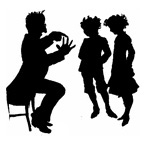
Cohabitation: Ten Facts
GUEST COLUMN
“Cohabitation — it’s training for divorce.” — Chuck Colson (1995)
1. Cohabitation is growing: 35 to 40 years ago cohabitation was rare; it was socially taboo. Growth by decade was: 1960s (up 19 percent), 1970s (up 204 percent), 1980s (up 80 percent), 1990s (up 66 percent), but up only 7.7 percent between 2000 and 2004. All told, cohabitation is up eleven-fold (U.S. Census Bureau, “Unmarried-Couple Households, by Presence of Children: 1960 to Present,” Table UC-1, June 12, 2003).
2. Relationships are unstable: One-sixth of cohabiting couples stay together for only three years; one in ten survives five or more years (Bennett, W.J., The Broken Hearth: Reversing the Moral Collapse of the American Family, 2001).
3. Greater risk of divorce: The rate of divorce among those who cohabit prior to marriage is nearly double (39 percent vs. 21 percent) that of couples who marry without prior cohabitation (ibid.).
4. Women suffer disproportionately: Cohabiting women often end up with the responsibilities of marriage — particularly when it comes to caring for children — without the legal protection (ibid.), while contributing more than 70 percent of the relationship’s income (Crouse, J.C., “Cohabitation: Consequences for Mothers and Children,” presentation at Kuala Lumpur, Malaysia, Oct. 11-14, 2004, U.N. Tenth Anniversary of the International Year of the Family).
You May Also Enjoy
Unhappily married adults who divorced were no more likely to report emotional and psychological improvements than those who stayed married.
When the Apostles, with Spirit-led courage and Christ-like mercy, boldly lifted the full yoke of the law from the disciples' shoulders, they retained sexual morality.
The needed healing of our sexual ethic is primarily the work of the Church — a Church that contributed to the moral degeneration of the culture by remaining silent on contraception.

